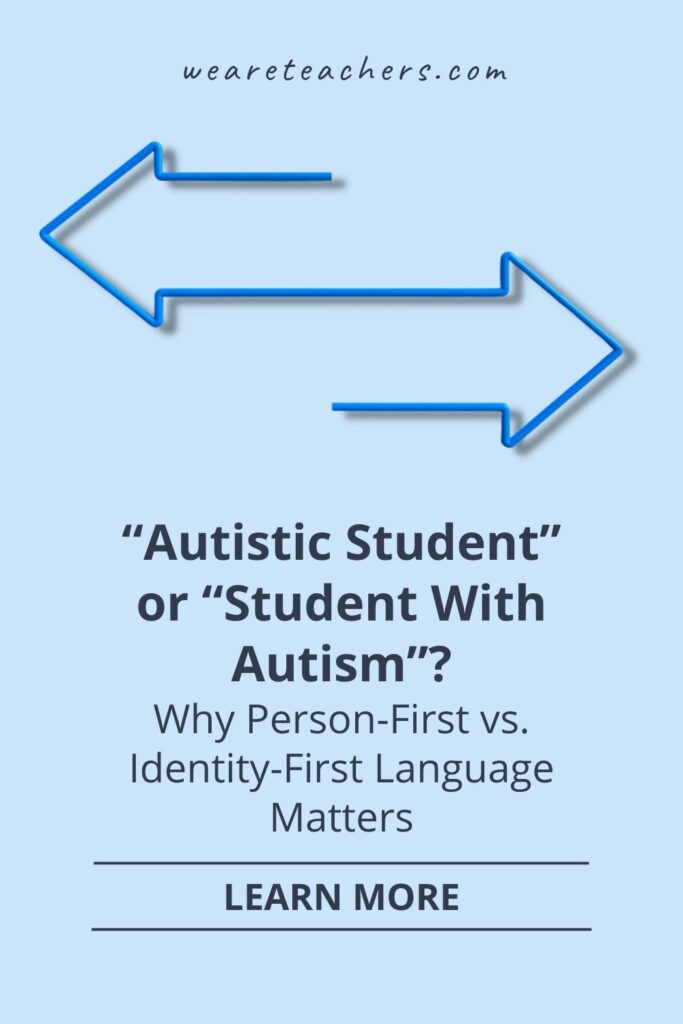As educators, we play a critical role in shaping how our students understand their identities and their place in their communities. Our identities may include gender, race, religious beliefs, family values, cultures and ethnicities, and disability.
For individuals with disabilities, the way they experience disability as part of their identity may differ. This is commonly discussed as person-first vs. identity-first language.
It’s important to understand how our students may identify with their disability in order to know what language most empowers them. Here’s the difference between the two.
Person-First Language
Person-first language means that we refer to an individual as a person with a particular diagnosis. This communicates that the individual is the person with a particular condition rather than the person is that condition. For example, we would say a “child with paralysis” rather than a “paralyzed child.” Or a “student with a disability” rather than “a disabled student.” Many individuals in the disability community prefer person-first language, as it acknowledges our identities as humans first. However, some communities within the disability community prefer identity-first language.
Identity-First Language
Identity-first language refers to an individual by leading with a description of their diagnosis or medical condition. This acknowledges that the person holds the condition as an important piece of their identity. Currently, many individuals in the autistic community prefer identity-first language. So you would refer to an individual in this community as an “autistic person” rather than a “person with autism.”
Many individuals in the disability community prefer person-first language. There are certain communities, such as the autistic community and the D/deaf community, that prefer identity-first language. If you are unsure which one to use, you can always ask the individual what they prefer. Or you can use the one most commonly preferred by that particular community. However, individual preferences may vary even within these communities. For example, you may have a student who prefers to be called a “student with autism.” It is always important to respect the preferences of each individual and use their preferred way of referring to themselves and their disability identity.
As with many aspects of language, trends may change over time. The current suggestions describe what the disability community prefers now, but that may change over time. It is important to stay educated about current trends in the disability rights and disability justice movements in order to understand the best ways to support and empower our students with disabilities.
For more articles like this, be sure to subscribe to our newsletters.


